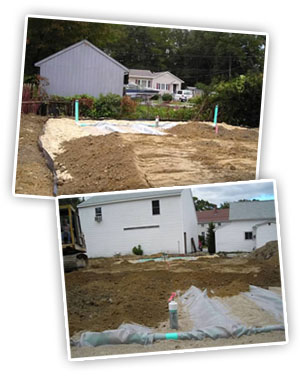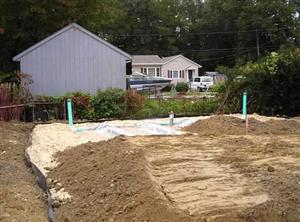 Most property owners that have a septic system know very little about their drainfield. We are told not to plant anything other than grass on top of it, not to build anything over top of it, not to park vehicles or anything else on top of it – but unless you experience a failed septic system, it isn’t all that obvious just how important the drainfield is to the entire treatment process.
Most property owners that have a septic system know very little about their drainfield. We are told not to plant anything other than grass on top of it, not to build anything over top of it, not to park vehicles or anything else on top of it – but unless you experience a failed septic system, it isn’t all that obvious just how important the drainfield is to the entire treatment process.
What is a Drainfield?
Your drainfield – which is sometimes called a leachfield or absorption field – is a network of pipes, trenches, gravel and soil. The pipes are perforated to allow wastewater to drip and flow through. They are laid inside of trenches or beds that are filled with gravel, which is also part of the filtration process. Soil surrounds the entire drainfield area and works in other ways to help your septic system work effectively.
What is the Process?
After it helps your solids to settle within the septic tank, liquid wastewater – which is sometimes called effluent – is discharged from the tank by one of two methods: pressure or gravity. It is moved to the absorption area, which is what we call a drainfield.
Gravity vs. Pressure: In a gravity discharge system, the wastewater will usually flow into a distribution box, which equally disburses it between the various trenches in the drainfield for final treatment. Pressure discharge systems will typically push the wastewater directly into the drainfield.
Once it reaches the drainfield, the wastewater trickles out of the pipes and passes into the gravel layer. Then it passes on down into the soil, which is where filtration happens on a micro level. The soil actually filters the wastewater like a composting system, percolating similar to an old-fashioned percolator coffee pot, passing through the various pore-like spaces within the soil. This is where the soil microbes go to work, treating the wastewater before it enters the ground water supply.
Fact: Soil that is dry, permeable and rich in oxygen that is located several feet below the actual drainfield is best suited for this process and will yield the most positive results.
Why is Soil Important?
Some people live in an area where the soil is sandy or rocky, while others live in areas with dark, rich soil or clay-based soil. The type of soil in your drainfield is actually very important because it is the final step in the treatment process, working to properly and safely dispose of the effluent before it works its way into the local surface or ground water. Clay soils can sometimes be too tight for filtration because of its natural density. However gravel or sand-based soils can sometimes be too loose, allowing too many solids to make their way through.
What is a Reserve Area?
Property that has had a new septic system installed since 1980 have what is called a reserve area. This reserve area is set aside, determined to be a suitable area for a new drainfield if it is needed. Because of its potential use, it must be treated just like your drainfield, meaning no planting, building or parking on top of it. A reserve area is required in the event of a failed septic system and it is important to ensure that one is available to replace the failed area.
Tips for Taking Care of Your Drainfield
Because we don’t all sit around taking about our septic systems with the neighbors or at family gatherings, this is a good place to answer some of the most important drainfield questions and address some of the issues that affect septic system owners.
- Locate your drainfield and reserve area.
- Don’t plant a garden or anything larger than grass over top of your drainfield.
- Don’t park cars, equipment or anything over top your drainfield or reserve area.
- Learn how to conserve water and find out what your maximum water usage should be for your system.
- Keep excess water away from your drainfield such as drainage ditches, irrigation systems, runoff from roofs in storms or draining hot tubs and pools.
- Don’t plant any trees or shrubs within 30 feet of the drainfield.
- Plant grass over top of your drainfield to prevent soil erosion.
- Don’t build anything or pave over your drainfield – no patios, garages, driveways or other structures.
- Keep large animals off the drainfield – this is not a safe place to house livestock.
If you have any additional questions about maintaining and taking care of your drainfield, call All-Clear Septic & Wastewater at 508-763-4431. Located in Acushnet, Massachusetts, but serving customers all over Southeastern Massachusetts and Rhode Island including New Bedford, Dartmouth, Fall River, Westport, Mattapoisett and Fairhaven, All-Clear can get you on a Preventative Maintenance Program that will keep your septic system working for you.

